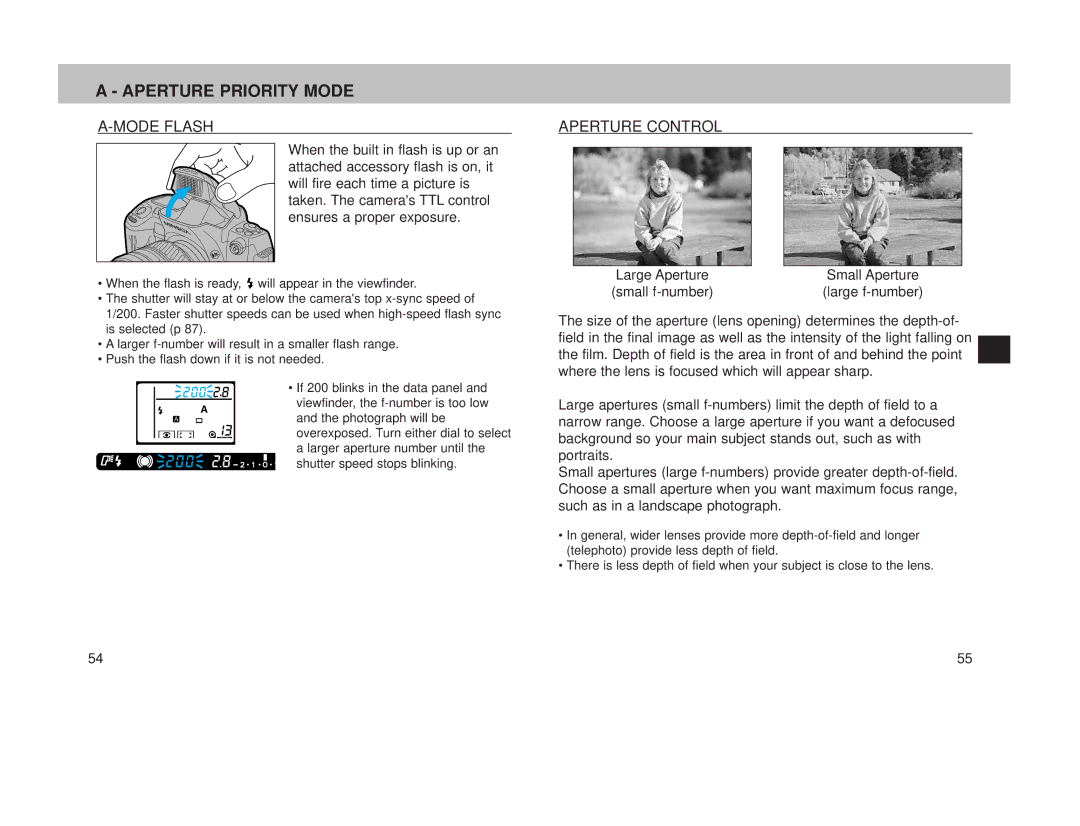
A - APERTURE PRIORITY MODE
A-MODE FLASH
When the built in flash is up or an attached accessory flash is on, it will fire each time a picture is taken. The camera'sTTL control ensures a proper exposure.
•When the flash is ready, ![]() will appear in the viewfinder.
will appear in the viewfinder.
•The shutter will stay at or below the camera's top
•A larger
•Push the flash down if it is not needed.
• If 200 blinks in the data panel and viewfinder, the
54
APERTURE CONTROL
Large Aperture | Small Aperture |
(small | (large |
The size of the aperture (lens opening) determines the
Large apertures (small
Small apertures (large
•In general, wider lenses provide more
•There is less depth of field when your subject is close to the lens.
55
